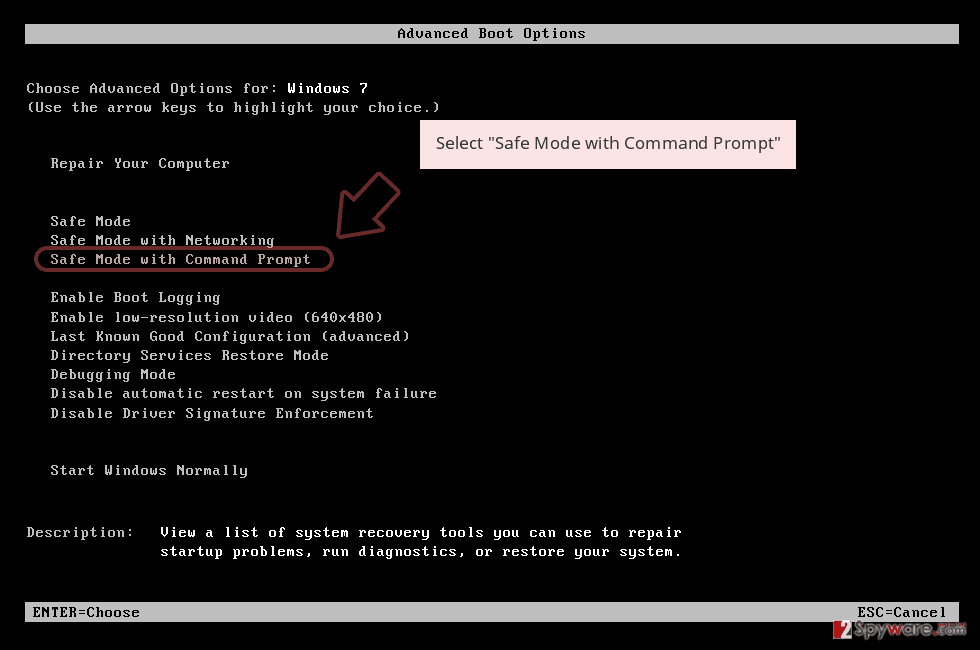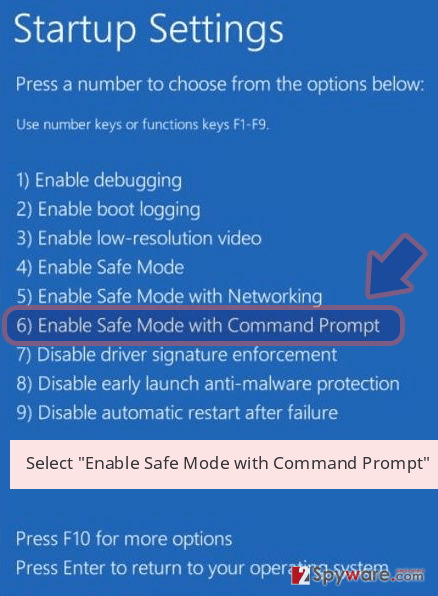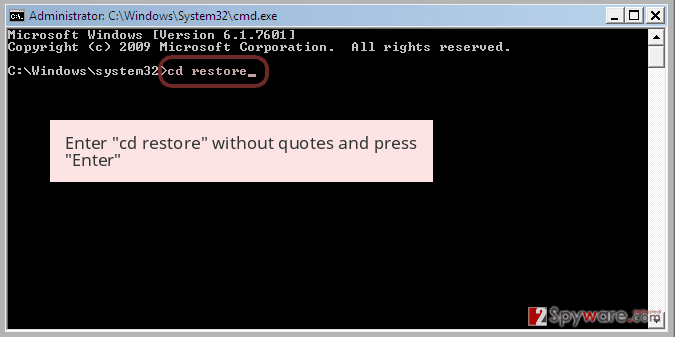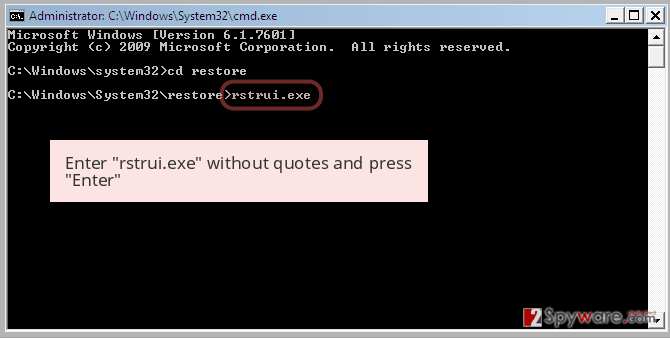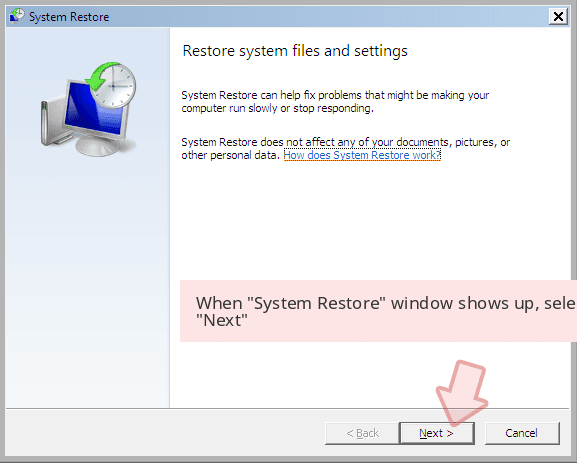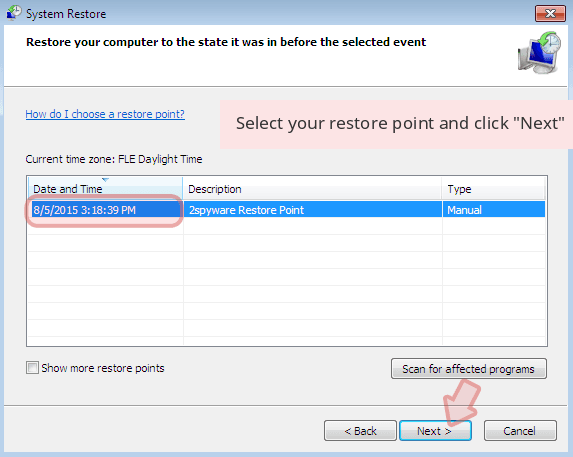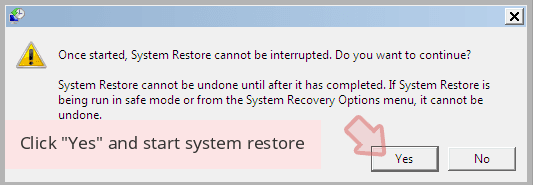AntiAntivirus (Removal Instructions) - Free Guide
AntiAntivirus Removal Guide
What is AntiAntivirus?
AntiAntivirus is a malicious program that can steal your data
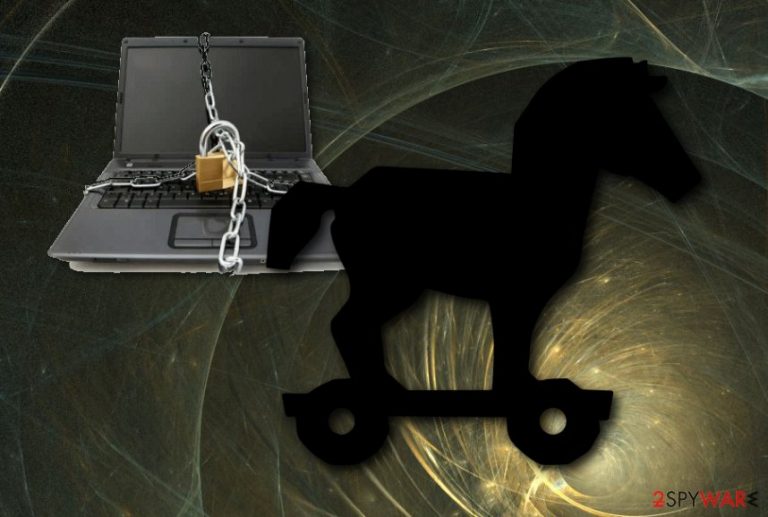
AntiAntivirus is a malware program that can disrupt the functions of PC giving much notice. The trojan usually enters the machine via malicious websites or spam emails and begins its activity immediately. It modifies certain system settings to gain root access to the computer and gain boot persistence – the malware loads every time Windows is launched. After that, the trojan attempts to disable anti-spyware software and deletes its main executable, making detection more difficult. It can also affect the performance of already installed software – it can crash, become non-responsive or fail to launch entirely.
| Name | AntiAntivirus |
|---|---|
| Type | Trojan horse |
| Dangers | Can attract malware, change essential settings |
| Distribution | Spam email attachments |
| Elimination | Install FortectIntego for AntiANtivurs removal |
In order to remove AntiAntivirus virus you will have to detect it first, i.e., know that the malware is installed on your machine, which itself could be quite problematic. Trojans usually expose no symptoms while performing malicious activities. However, the longer malware stays on your computer, the more damage it can cause.
Malware[1] can perform differently, depending on the type of code. For example, trojan horses can open a backdoor to other more dangerous parasites, such as ransomware, which can lead to permanent destruction of your personal files.
AntiAntivirus removal should be performed because the virus is capable of stealing or even deleting victims' data. This can lead to terrible consequences, such as identity theft or stolen money.
Although symptoms of the infection may vary, usually none of them are present, as trojans are quite stealthy parasites. Nevertheless, users could experience slowdowns of the machine, deleted or added files or applications, frequent errors messages or similar. In the end, the normal functionality of the computer might be compromised entirely and may even result in hardware wear-and-tear.
Because trojans are a dangerous type of malware, we do not recommend to tamper with system files manually. This could harm your system even more and do not fix the issue with the infection. Instead, you should download and install FortectIntego for permanent AntiAntivirus removal.
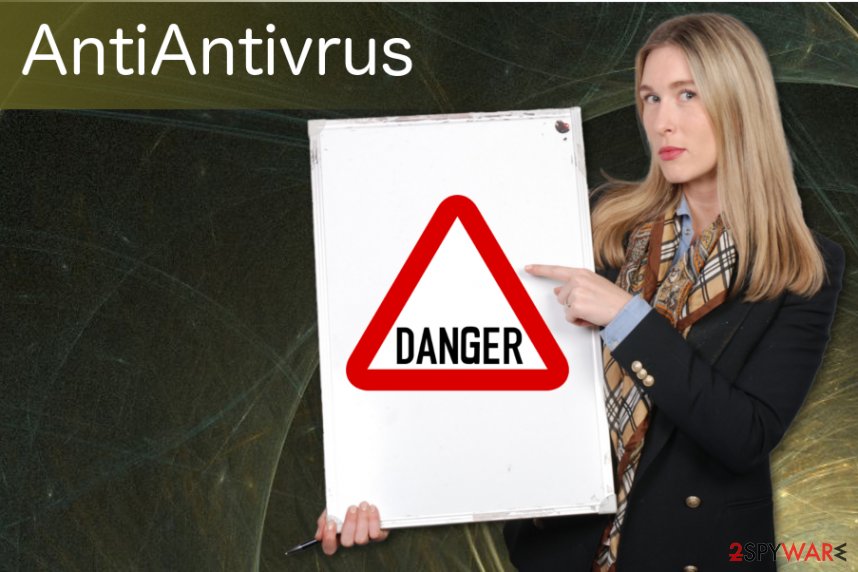
Trojan horses can hide inside spam email attachments or fake hyperlinks
When dealing with malicious programs you need to realize that they enter the system silently and you should always be aware of that. In this way, you can prevent most of the malware from infiltrating your machine, although no method of protection is 100% secure.
The most prominent malware distribution method is via spam emails. Hackers often send out thousands of phishing emails that can be targeted or distributed randomly. As soon as it reaches targets, they may get tricked into opening malicious attachments filled with macro viruses[2] or click on disguised hyperlinks. Both of these actions result in virus infection. Thus, do not carelessly open every email that is thrown at you, researchers recommend.[3]
Terminate AntiAntivirus and clean your PC
To remove AntiAntivirus, you need to perform a full system scan on the PC. This ensures that the system is clean from any virus infections. FortectIntego, SpyHunter 5Combo Cleaner or Malwarebytes can be helpful since these tools are legitimate and helpful when it comes to malware detection. Delete possible threats and double-check if everything runs smooth again.
If you do not think you need AntiAntivirus removal, you are wrong. You can lose your personal data to cybercriminals and render your system vulnerable to other infections.
Getting rid of AntiAntivirus. Follow these steps
Manual removal using Safe Mode
Try rebooting your system ins Safe Mode with Networking if you want to solve issues with your PC:
Important! →
Manual removal guide might be too complicated for regular computer users. It requires advanced IT knowledge to be performed correctly (if vital system files are removed or damaged, it might result in full Windows compromise), and it also might take hours to complete. Therefore, we highly advise using the automatic method provided above instead.
Step 1. Access Safe Mode with Networking
Manual malware removal should be best performed in the Safe Mode environment.
Windows 7 / Vista / XP
- Click Start > Shutdown > Restart > OK.
- When your computer becomes active, start pressing F8 button (if that does not work, try F2, F12, Del, etc. – it all depends on your motherboard model) multiple times until you see the Advanced Boot Options window.
- Select Safe Mode with Networking from the list.
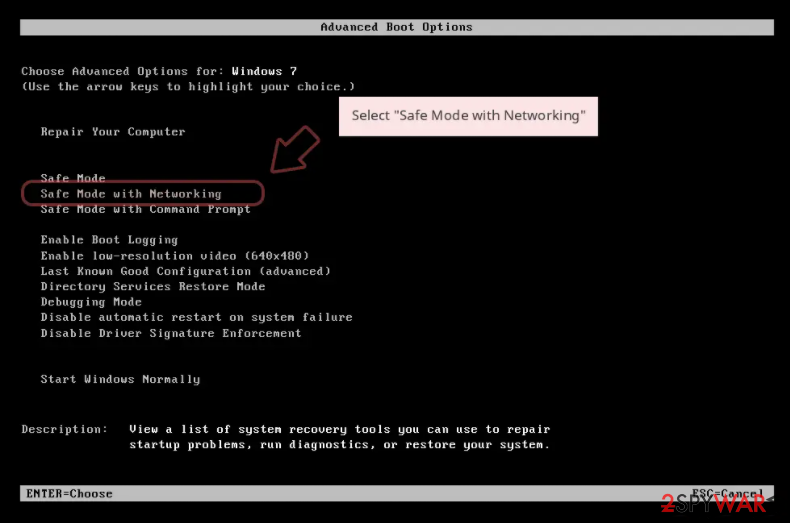
Windows 10 / Windows 8
- Right-click on Start button and select Settings.
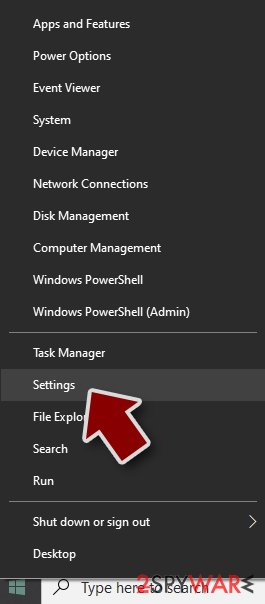
- Scroll down to pick Update & Security.
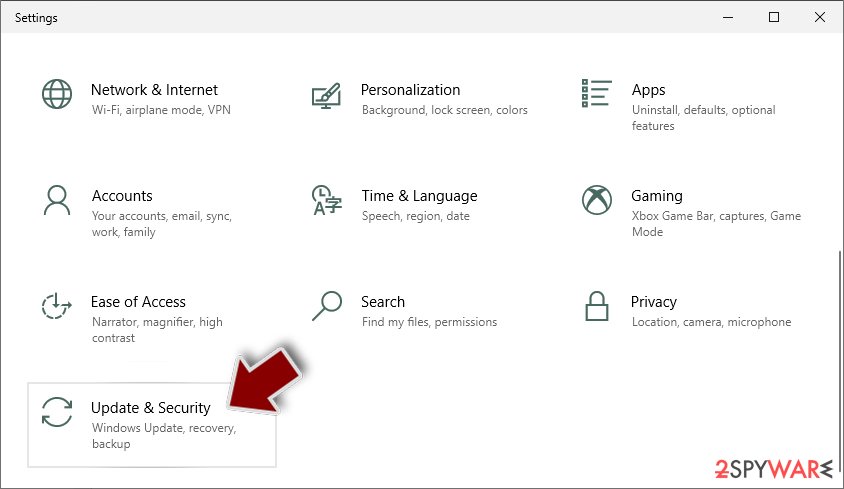
- On the left side of the window, pick Recovery.
- Now scroll down to find Advanced Startup section.
- Click Restart now.
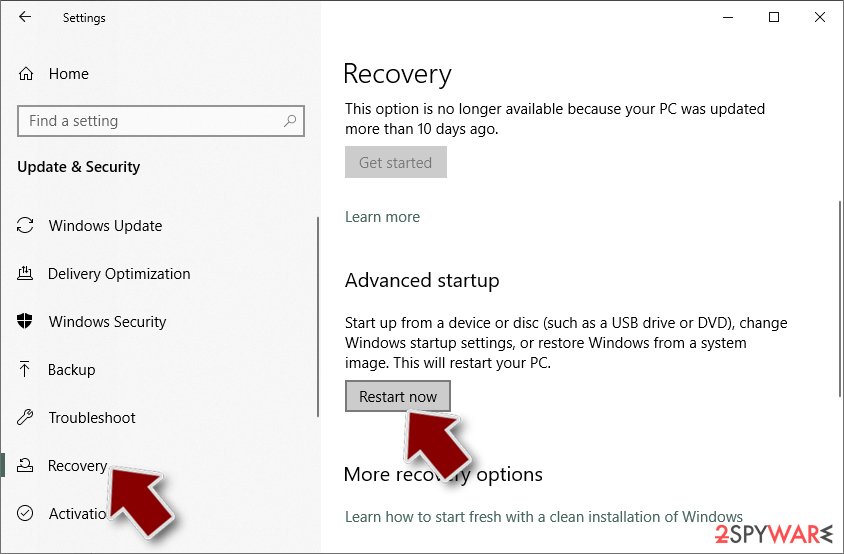
- Select Troubleshoot.
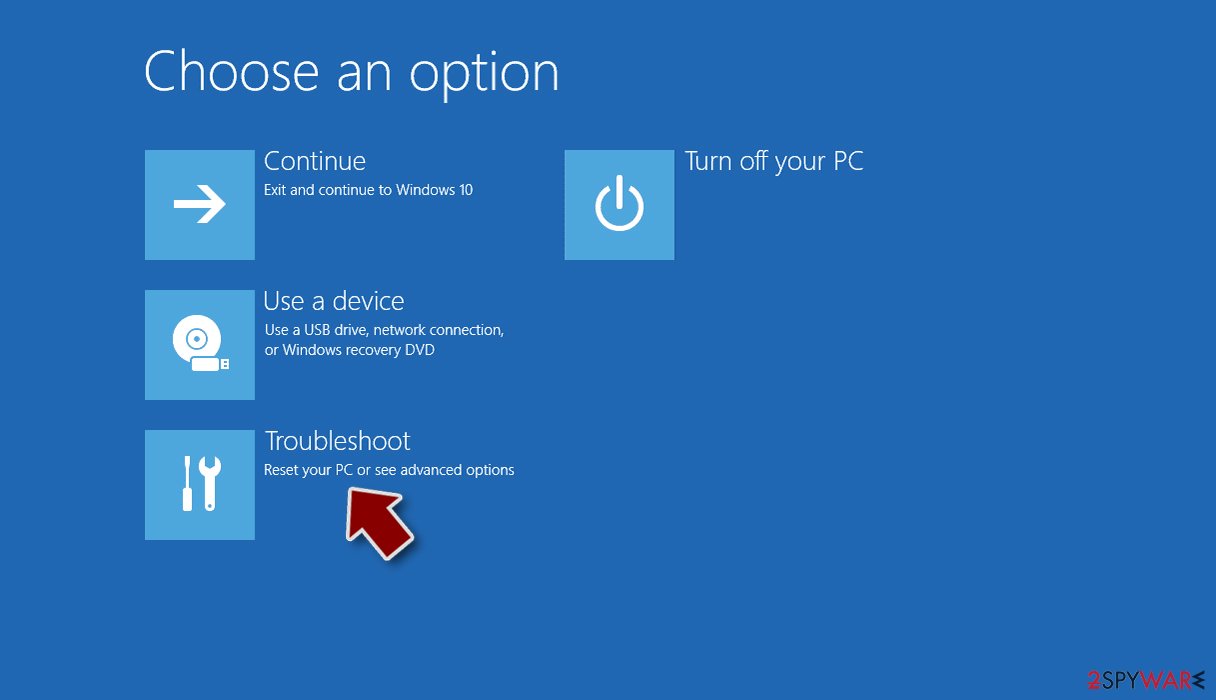
- Go to Advanced options.
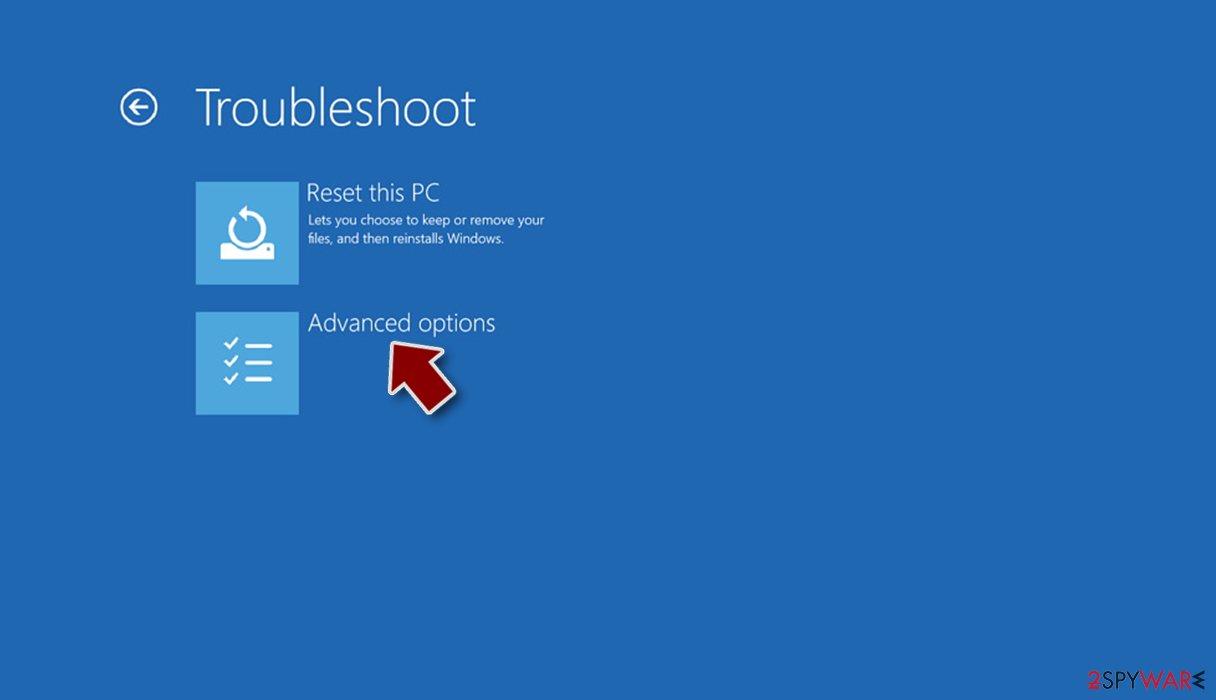
- Select Startup Settings.
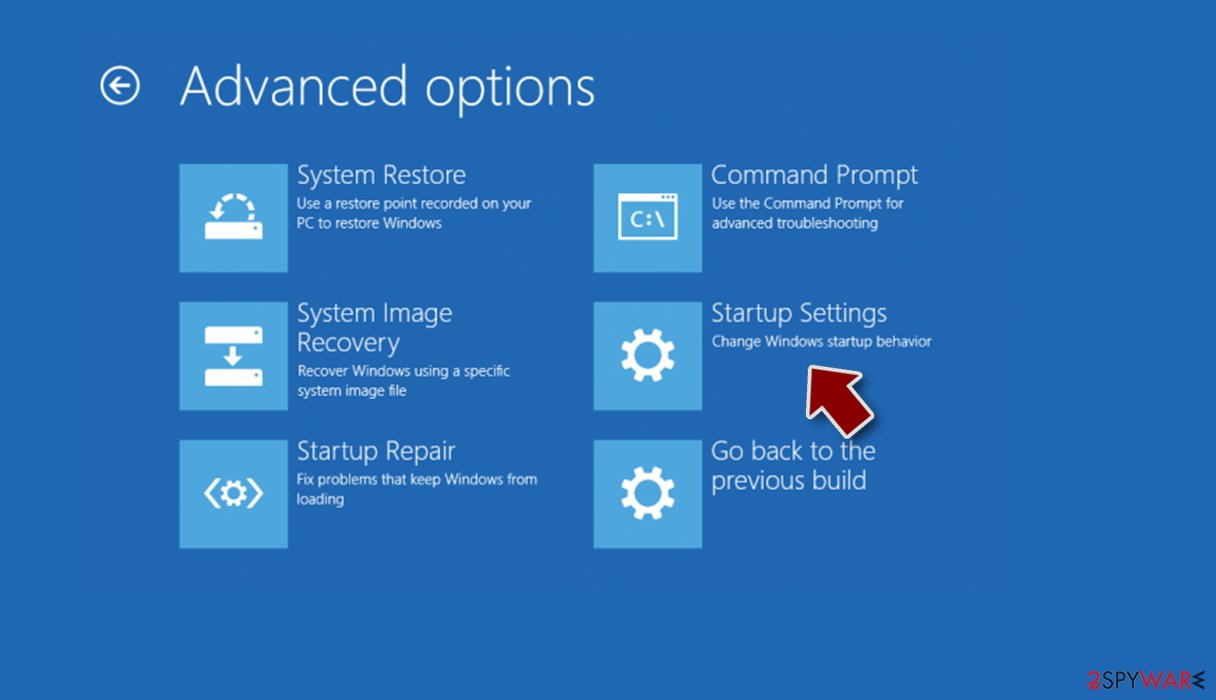
- Press Restart.
- Now press 5 or click 5) Enable Safe Mode with Networking.
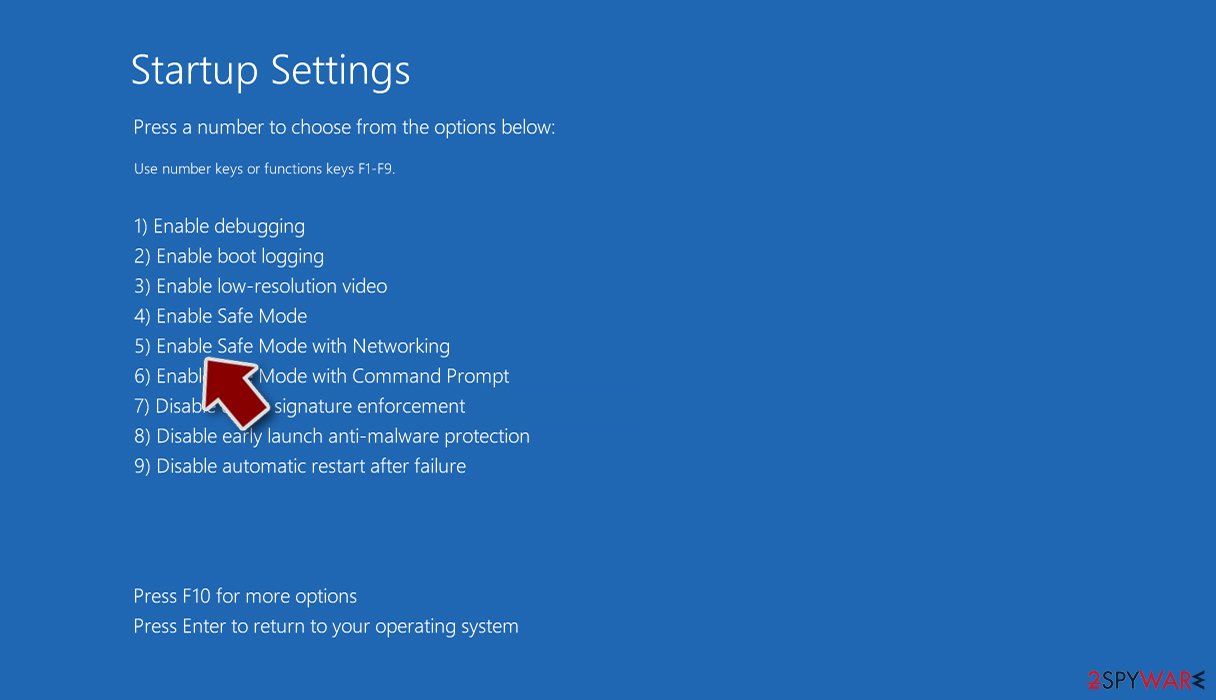
Step 2. Shut down suspicious processes
Windows Task Manager is a useful tool that shows all the processes running in the background. If malware is running a process, you need to shut it down:
- Press Ctrl + Shift + Esc on your keyboard to open Windows Task Manager.
- Click on More details.
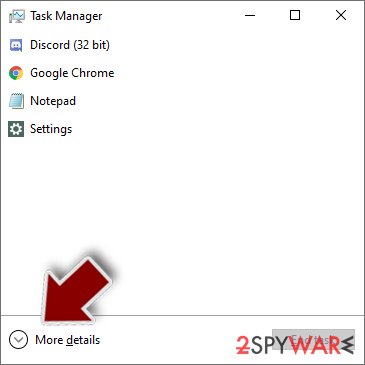
- Scroll down to Background processes section, and look for anything suspicious.
- Right-click and select Open file location.
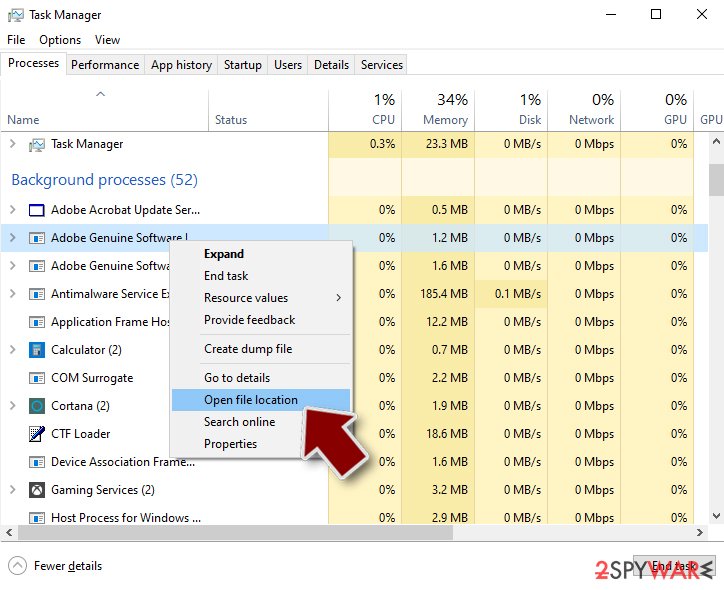
- Go back to the process, right-click and pick End Task.
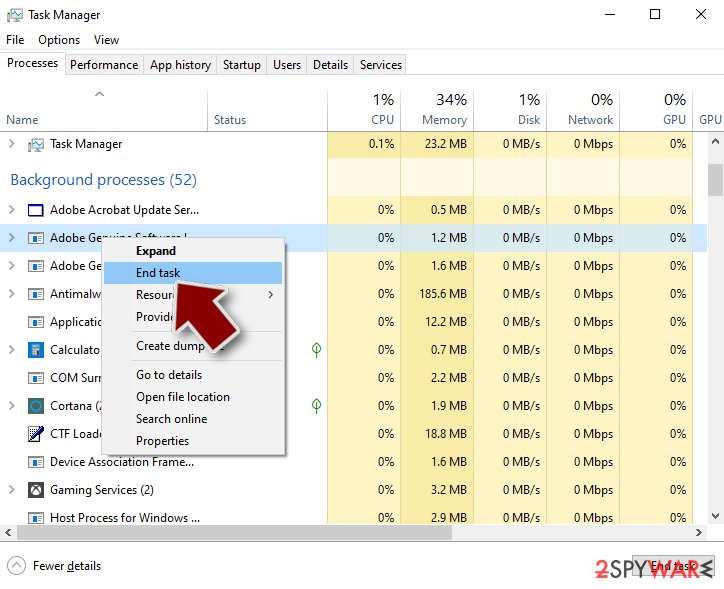
- Delete the contents of the malicious folder.
Step 3. Check program Startup
- Press Ctrl + Shift + Esc on your keyboard to open Windows Task Manager.
- Go to Startup tab.
- Right-click on the suspicious program and pick Disable.
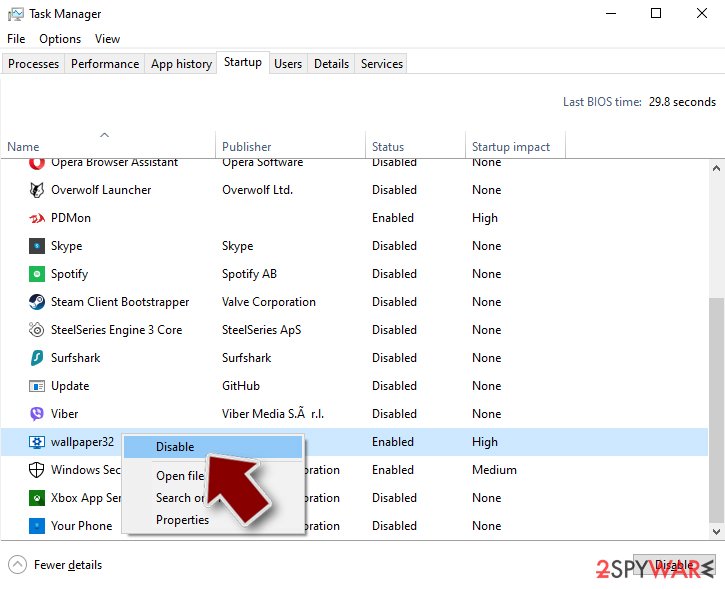
Step 4. Delete virus files
Malware-related files can be found in various places within your computer. Here are instructions that could help you find them:
- Type in Disk Cleanup in Windows search and press Enter.
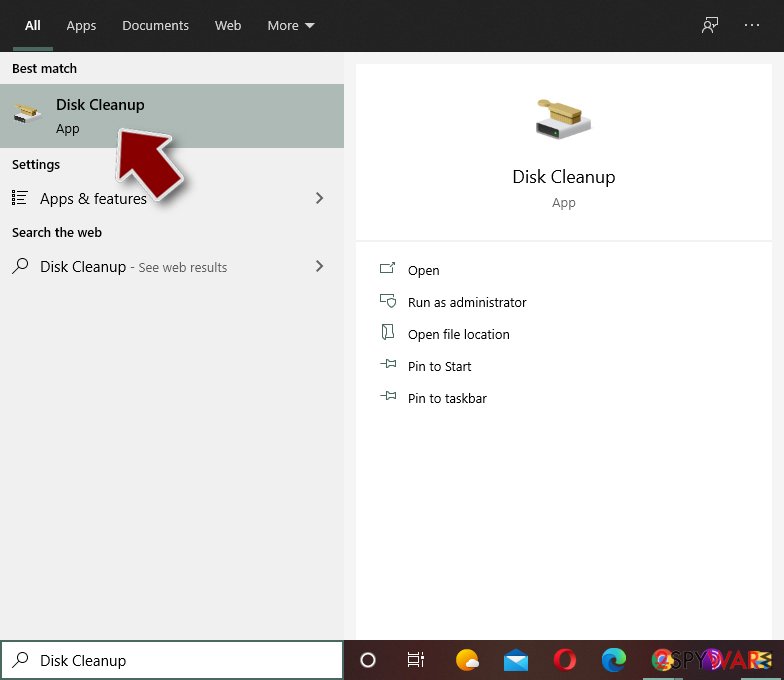
- Select the drive you want to clean (C: is your main drive by default and is likely to be the one that has malicious files in).
- Scroll through the Files to delete list and select the following:
Temporary Internet Files
Downloads
Recycle Bin
Temporary files - Pick Clean up system files.
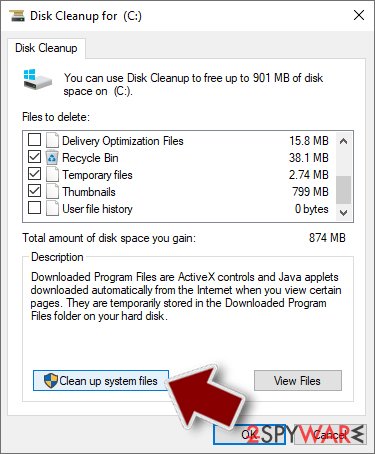
- You can also look for other malicious files hidden in the following folders (type these entries in Windows Search and press Enter):
%AppData%
%LocalAppData%
%ProgramData%
%WinDir%
After you are finished, reboot the PC in normal mode.
Remove AntiAntivirus using System Restore
System Restore feature might also help if you are dealing with Trojan AntiAntivirus:
-
Step 1: Reboot your computer to Safe Mode with Command Prompt
Windows 7 / Vista / XP- Click Start → Shutdown → Restart → OK.
- When your computer becomes active, start pressing F8 multiple times until you see the Advanced Boot Options window.
-
Select Command Prompt from the list

Windows 10 / Windows 8- Press the Power button at the Windows login screen. Now press and hold Shift, which is on your keyboard, and click Restart..
- Now select Troubleshoot → Advanced options → Startup Settings and finally press Restart.
-
Once your computer becomes active, select Enable Safe Mode with Command Prompt in Startup Settings window.

-
Step 2: Restore your system files and settings
-
Once the Command Prompt window shows up, enter cd restore and click Enter.

-
Now type rstrui.exe and press Enter again..

-
When a new window shows up, click Next and select your restore point that is prior the infiltration of AntiAntivirus. After doing that, click Next.


-
Now click Yes to start system restore.

-
Once the Command Prompt window shows up, enter cd restore and click Enter.
Finally, you should always think about the protection of crypto-ransomwares. In order to protect your computer from AntiAntivirus and other ransomwares, use a reputable anti-spyware, such as FortectIntego, SpyHunter 5Combo Cleaner or Malwarebytes
How to prevent from getting trojans
Protect your privacy – employ a VPN
There are several ways how to make your online time more private – you can access an incognito tab. However, there is no secret that even in this mode, you are tracked for advertising purposes. There is a way to add an extra layer of protection and create a completely anonymous web browsing practice with the help of Private Internet Access VPN. This software reroutes traffic through different servers, thus leaving your IP address and geolocation in disguise. Besides, it is based on a strict no-log policy, meaning that no data will be recorded, leaked, and available for both first and third parties. The combination of a secure web browser and Private Internet Access VPN will let you browse the Internet without a feeling of being spied or targeted by criminals.
No backups? No problem. Use a data recovery tool
If you wonder how data loss can occur, you should not look any further for answers – human errors, malware attacks, hardware failures, power cuts, natural disasters, or even simple negligence. In some cases, lost files are extremely important, and many straight out panic when such an unfortunate course of events happen. Due to this, you should always ensure that you prepare proper data backups on a regular basis.
If you were caught by surprise and did not have any backups to restore your files from, not everything is lost. Data Recovery Pro is one of the leading file recovery solutions you can find on the market – it is likely to restore even lost emails or data located on an external device.
- ^ What is malware?. Paloaltonetworks. Cybersecurity network.
- ^ Macro-virus. Wikipedia. The free encyclopedia.
- ^ Semvirus. Semvirus. Security news.
